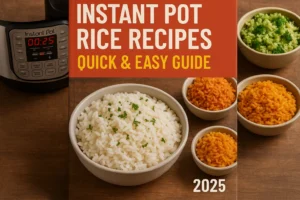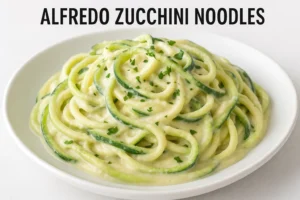Shrimp spring rolls represent one of the most beloved appetizers in Asian cuisine, combining the delicate sweetness of fresh shrimp with crisp vegetables wrapped in translucent rice paper. Whether you’re hosting a dinner party, preparing a light lunch, or craving a healthy snack, these Vietnamese spring rolls deliver exceptional flavor without the guilt of deep-frying. Unlike their fried counterparts, fresh spring rolls showcase the natural textures and colors of each ingredient, creating a visually stunning dish that tastes as good as it looks.
The beauty of shrimp spring rolls lies in their versatility and simplicity. With just a handful of fresh ingredients and minimal cooking required, you can create restaurant-quality appetizers in your own kitchen. This comprehensive guide will walk you through everything you need to know about making the best shrimp spring rolls, from selecting the freshest ingredients to mastering the rolling technique. You’ll discover 15 essential tips and variations that will elevate your spring roll game and impress your family and guests.
What makes these rolls particularly appealing is their nutritional profile. Packed with lean protein from shrimp, fiber-rich vegetables, and aromatic herbs, fresh spring rolls offer a balanced meal option that supports healthy eating goals. The absence of deep-frying means you can enjoy authentic Asian flavors while maintaining a light, refreshing dining experience. Whether you’re a seasoned home cook or a beginner in the kitchen, this guide will equip you with the knowledge and confidence to create perfect shrimp spring rolls every single time.
Essential Ingredients for the Ultimate Shrimp Spring Rolls
Primary Components
Creating exceptional shrimp spring rolls starts with selecting high-quality ingredients. Fresh, medium-sized shrimp form the protein foundation of these rolls. Look for shrimp that are firm, translucent, and free from any ammonia smell. You’ll need approximately 15-20 shrimp, depending on their size and how many rolls you’re preparing.
Rice paper wrappers are the defining characteristic of fresh spring rolls. These thin, translucent sheets are made from rice flour and water, requiring only a brief soak in warm water to become pliable. Purchase wrappers that are 8-9 inches in diameter for optimal rolling size.
Vegetable and Herb Selection
The vegetable medley in shrimp spring rolls provides crunch, color, and nutritional value. Fresh lettuce leaves, preferably Boston or butter lettuce, add a crisp texture. Julienned carrots contribute sweetness and vibrant orange color, while cucumber strips offer refreshing coolness. Rice vermicelli noodles provide substance and help bind the ingredients together.
Fresh herbs are non-negotiable for authentic flavor. Thai basil, mint leaves, and cilantro create the aromatic profile that distinguishes Vietnamese spring rolls from other appetizers. These herbs should be fresh, bright green, and aromatic for the best results.
Step-by-Step Guide to Making Perfect Shrimp Spring Rolls
Preparing the Shrimp
Begin by bringing a pot of salted water to a boil. Add your shrimp and cook for 2-3 minutes until they turn pink and opaque. Avoid overcooking, as this will make the shrimp rubbery. Once cooked, immediately transfer the shrimp to an ice bath to stop the cooking process. After cooling, peel and devein the shrimp, then slice them in half lengthwise to create thin pieces that will lay flat in your rolls.
Assembling Your Ingredients
Prepare all your vegetables and herbs before you begin rolling. Cook the rice vermicelli according to package directions, typically 3-4 minutes in boiling water, then rinse with cold water and drain thoroughly. Wash and dry all lettuce leaves, ensuring they’re completely dry to prevent soggy rolls. Julienne your carrots and cucumbers into thin matchsticks, and pick fresh herb leaves from their stems.
The Rolling Technique
The key to beautiful shrimp spring rolls is mastering the rolling technique. Fill a large, shallow dish with warm water. Dip one rice paper wrapper into the water for about 10-15 seconds, just until it becomes pliable but not completely soft. Lay the softened wrapper on a clean, damp cutting board or plate.
Place a lettuce leaf on the lower third of the wrapper, leaving about 2 inches from the bottom edge. Add a small handful of vermicelli noodles, followed by your vegetable strips and fresh herbs. Fold the bottom edge of the wrapper over the filling, then fold in the sides. Place 3-4 shrimp halves in a row where you can see them through the wrapper, then continue rolling tightly to seal.
15 Expert Tips for Superior Shrimp Spring Rolls
Temperature Control
1. Water Temperature Matters: Use warm, not hot, water for soaking rice paper wrappers. Water that’s too hot will cause the wrappers to become overly sticky and tear easily.
2. Room Temperature Assembly: All ingredients should be at room temperature before assembly. Cold ingredients can cause the rice paper to become brittle and crack.
Ingredient Preparation
3. Pre-slice Everything: Have all components prepared and organized before you begin rolling. This assembly-line approach ensures efficiency and prevents wrappers from drying out.
4. Dry Your Vegetables: Excess moisture is the enemy of perfect spring rolls. Pat all vegetables and herbs completely dry to prevent soggy wrappers.
5. Quality Shrimp Selection: Choose sustainably sourced, fresh or flash-frozen shrimp. Wild-caught varieties often have superior flavor and texture.
Rolling Mastery
6. Don’t Overfill: Less is more when it comes to filling shrimp spring rolls. Overstuffed rolls are difficult to seal and prone to tearing.
7. Tight Rolling: Apply firm, consistent pressure while rolling to create compact cylinders that hold together well and are easier to eat.
8. Strategic Shrimp Placement: Position shrimp halves against the wrapper where they’ll be visible, creating an attractive presentation.
Storage and Serving
9. Proper Storage: Cover finished spring rolls with a damp paper towel and plastic wrap. They’ll stay fresh in the refrigerator for up to 4 hours.
10. Serve Fresh: Shrimp spring rolls are best enjoyed within 1-2 hours of preparation when the wrappers are still slightly chewy and haven’t become too soft.
Flavor Enhancement
11. Quality Dipping Sauce: Prepare homemade peanut sauce or hoisin-based dipping sauce to complement your rolls. The sauce is essential to the overall flavor experience.
12. Herb Variety: Experiment with different herb combinations like perilla leaves, Vietnamese coriander, or chives to create unique flavor profiles.
13. Add Protein Variety: Mix shrimp with thin strips of cooked pork or chicken for added protein and flavor dimension.
Presentation
14. Visual Appeal: Arrange spring rolls seam-side down on a platter, showcasing the visible shrimp through the translucent wrapper.
15. Garnish Thoughtfully: Serve with extra fresh herbs, lime wedges, and colorful dipping sauces for an Instagram-worthy presentation.
Popular Variations of Shrimp Spring Rolls
Regional Adaptations
Vietnamese-style spring rolls, also known as gỏi cuốn, remain the most popular version worldwide. Thai variations often incorporate more chili heat and may include peanuts in the roll itself. Chinese versions sometimes feature cooked ingredients and different wrapper textures.
Creative Fusion Options
Modern interpretations of shrimp spring rolls include additions like mango slices for tropical sweetness, avocado for creaminess, or edamame for extra protein. Some recipes incorporate quinoa instead of rice noodles for a gluten-free, protein-rich alternative.
Health Benefits of Fresh Shrimp Spring Rolls
These fresh spring rolls offer numerous nutritional advantages. Shrimp provides lean protein, selenium, and omega-3 fatty acids while remaining low in calories. The abundance of fresh vegetables contributes vitamins, minerals, and dietary fiber. Unlike deep-fried egg rolls, these contain no added oils, making them an excellent choice for health-conscious diners.
The herb components in spring rolls aren’t just flavorful—they’re nutritional powerhouses. Mint aids digestion, cilantro provides antioxidants, and basil offers anti-inflammatory properties. The rice paper wrappers are naturally gluten-free, making these rolls suitable for people with celiac disease or gluten sensitivity.
Essential Dipping Sauces
Classic Peanut Sauce
The traditional accompaniment to shrimp spring rolls is a rich peanut sauce made with peanut butter, hoisin sauce, lime juice, and garlic. This creamy, slightly sweet sauce perfectly balances the fresh, light flavors of the rolls.
Hoisin-Based Sauce
A simpler option combines hoisin sauce with water, lime juice, and crushed peanuts. This sauce offers sweet and savory notes without the richness of peanut butter.
Nước Chấm
This authentic Vietnamese dipping sauce features fish sauce, lime juice, sugar, garlic, and chili. Its bright, complex flavor profile enhances rather than overwhelms the delicate spring roll ingredients.
Storage and Make-Ahead Tips
While shrimp spring rolls are best enjoyed fresh, you can prepare components in advance. Cook and chill shrimp up to 24 hours ahead. Pre-cut vegetables can be stored in airtight containers for several hours. However, assemble the actual rolls no more than 4 hours before serving to maintain optimal texture.
If you must store assembled rolls, place them in a single layer on a plate, cover with dampened paper towels, and wrap tightly with plastic wrap. Never refrigerate them uncovered, as the wrappers will become hard and chewy.
Serving Suggestions and Pairings
Shrimp spring rolls work beautifully as appetizers, light meals, or party food. Serve them alongside other Asian-inspired dishes like pho, pad thai, or lettuce wraps. For a complete meal, pair them with a light soup and jasmine rice.
These fresh rolls are perfect for summer gatherings, outdoor parties, and buffet-style dining. They’re naturally gluten-free, dairy-free, and can be adapted for various dietary preferences. Consider offering multiple dipping sauce options to accommodate different taste preferences.
Conclusion
Mastering the art of shrimp spring rolls opens up a world of fresh, healthy, and delicious dining possibilities. By following these 15 expert tips and techniques, you’ll create restaurant-quality rolls that impress guests and satisfy your cravings for authentic Asian cuisine. The key to success lies in using the freshest ingredients, maintaining proper technique, and practicing your rolling skills.
These fresh spring rolls represent more than just food—they’re a celebration of fresh ingredients, vibrant flavors, and healthy eating. Whether you stick to traditional Vietnamese-style rolls or experiment with creative variations, you’ll discover that making shrimp spring rolls at home is both rewarding and surprisingly simple. With a little practice and attention to detail, you’ll soon be crafting perfect rolls that rival your favorite restaurant’s version.
FAQs
Q1: Can I make shrimp spring rolls ahead of time?
You can prepare all components up to 24 hours in advance, but assemble the shrimp spring rolls no more than 2-4 hours before serving. Store assembled rolls covered with damp paper towels and plastic wrap in the refrigerator to prevent the rice paper from drying out.
Q2: What’s the difference between spring rolls and summer rolls?
Spring rolls and summer rolls are essentially the same dish—fresh, unfried rolls wrapped in rice paper. The term “summer rolls” emphasizes their refreshing, light quality, while “spring rolls” is the more common name. Both differ from fried spring rolls, which use wheat-based wrappers.
Q3: Can I freeze shrimp spring rolls?
Fresh shrimp spring rolls don’t freeze well because the rice paper becomes hard and the vegetables lose their crisp texture upon thawing. It’s best to prepare them fresh or store assembled rolls in the refrigerator for up to 4 hours maximum.
Q4: What can I substitute for rice paper wrappers?
While rice paper is traditional, you can use lettuce leaves as a low-carb wrapper alternative for a deconstructed version. However, true spring rolls require rice paper for their characteristic translucent appearance and chewy texture. There’s no exact substitute that provides the same result.
Q5: How do I prevent rice paper from tearing while rolling?
Use warm (not hot) water and only soak the wrapper for 10-15 seconds—it will continue softening as you work. Don’t overfill the rolls, and ensure your work surface is slightly damp but not wet. Practice makes perfect, so don’t get discouraged if your first few shrimp spring rolls aren’t perfect!
Read More: Butter Cheeseburger Rollups 5 Easy Recipe & Cooking Tips








